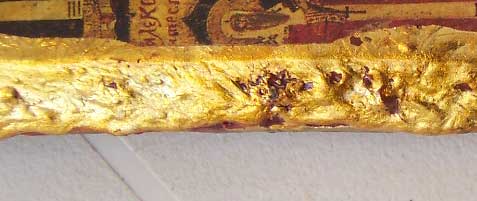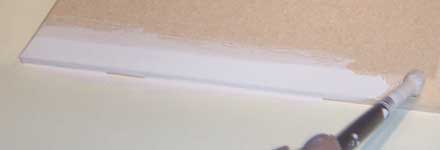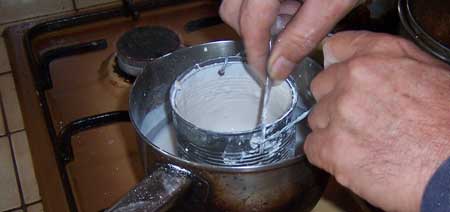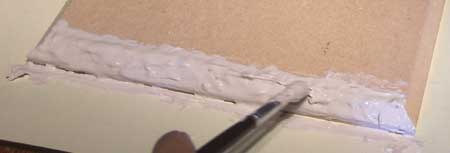How To Make A Simple GessoWhat is gesso? In our context gesso is a base upon which to lay imitation gold leaf or gold leaf.
Why use it? Mainly because it opens up a whole new world of creative possibilities for those working with a surface that can accept gesso. And of course if you are thinking of repairing a damaged picture frame which has an original gesso finish.
When it comes to making your own gesso there are very many recipes to choose from, each one depends on what the basic ingredients consist of as to how the gesso turns out. I have tried many recipes and most work out ok.
I use a simple recipe we developed from trying many others, it consists of gilders whiting (finely ground chalk) animal glue and water, it is simple to make and gives very good results. The recipe is available from the manual when you make any purchase from our site. How to use gesso The thickness of the gesso you need will depend on the item to be gilded, if you are wanting to gild something with fine detail you will need a thinner gesso than if you want to obtain a rough distressed finish. The thinner gesso should be built up in coats, whereas the thicker gesso only needs one coat.
The only equipment you need is a water jacketed glue boiler, however these are expensive so I make do with a tin can placed inside a saucepan, the can needs to be placed on spacers to keep the bottom of the can away from the heat.
The glue should never exceed about 135 degrees Fahrenheit or 57 Celsius.
Exceeding this temperature will dramatically weaken the glues ability to adhere. In practice this means keeping the saucepan on a low heat. Put the glue and water into the can and leave overnight or until all the glue has dissolved in the water, I normally heat the water first, this speeds up the melting of the glue. Then gently sift the chalk or whiting into the water and stir gently taking care that air bubbles do not form. I keep the flame under the saucepan turned down very low so that the water is only on a gentle heat.
Then it is simply a question of brushing on the gesso in whatever way you desire, if you are gessoing a complex picture frame you will want to keep the coating thin in order to maintain the contours of the frame. If however your main interest is in making the surface look irregular and "interesting" you can manipulate the thicker gesso into peaks.
When you have finished laying the gesso you can then apply the red ground mentioned on the "grounds" page, when dry the leaf can then be applied...and remember all these processes are covered in the manuals available from the download page.
Here are some other ways of obtaining interesting distressed finishes.
|
Home About This Golden Leaf How To Apply The Leaf Gold Size or Adhesive Gilding Grounds Crackle Glaze Antique Glazes Gesso Other Distressed Finishes Shabby Chic Furniture Gold Leaf Techniques On Leather Gold Leaf Painting Buy Gilding Kits Gold Leaf Supplies Download Page Links Contact Us
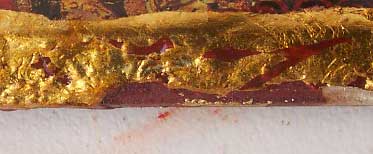 You can purchase a ready made gesso made from acrylics, but you cannot burnish this gesso, I never use it
myself, the main reason being I have got used to making my own.
You can purchase a ready made gesso made from acrylics, but you cannot burnish this gesso, I never use it
myself, the main reason being I have got used to making my own. 